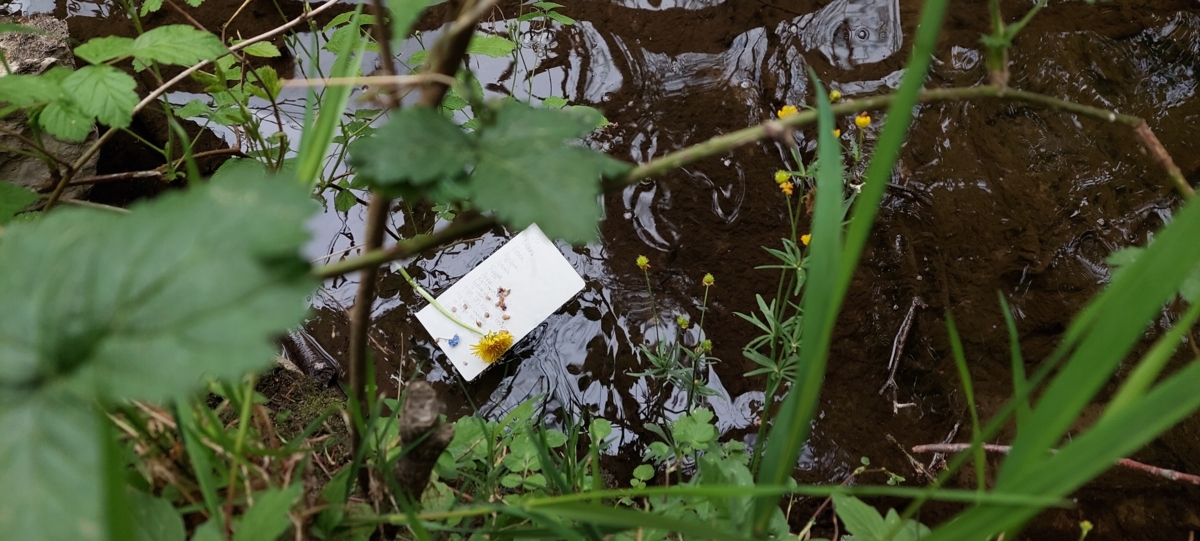Het Onderzoeksplan / The Research Plan: The Post Collective & Anna Housiada
Metaspora started from a concrete need. As foreigners, we have often felt deprived of the privilege to be close to nature in the profound and spiritual way locals usually do in their homeland. Immigrants are mainly destined to live in cities, which makes a totally different experience compared to the connection we had with the rural in the places we grew up. Therefore, this project was driven, not by curiosity or fantasy, but by a deep need to fill this void, or at least explore it and make room for our reflection, experience and creativity in the process. In Belgium, we are separated from our families and the communities in which we learned to connect with the natural environment through rituals and customs that are imprinted in our body and memory. The term ‘metaspora’, unlike diaspora, emphasizes the act of re-rooting and the intimacy between us and the lands we inhabited in the past and the present. We are looking for ways to blossom in this new land, reconnect with our memories, and create cultural synergies together .
It is impossible to separate this project from life. Everything we do when we are on a residency together is part of the practice. Similarly, everyone who is with us there is part of the research: Sawsan’s two kids, Orchid and Amalia, Anna’s dog, Koudra, the animals that live on the farm and the plants that grow here. An important aspect of this connection between research and life is motherhood. For Sawsan’s children, Metaspora provides a way of shaping identity and connection with this land, and at the same time, discussions about womanhood, the role of the carer, nature, body and fertility are always present. Cross-cultural exchange is ingrained in our collective, which consists of people from different places and backgrounds wanting to reactivate and share practices that until now belonged to their respective past. Doing that also allows us to reflect on the meaning of these practices when they are displaced from the culture/land scape where they were traditionaly situated and seeing them in a broader lens, outside of the nationalist and patriarchal narratives they are often framed and limited by. This action is giving us the opportunity to handpick what we want to keep, relate and transform from our given cultures.
Engaging with our practice here changes everything. Returning every time to Zarlardinge (a farm close to Geraardsbergen) for the residency generates a form of belonging that we didn’t experience before, a sense of rooting- when you don’t feel like a stranger anymore. This familiarity with a specific rural space makes it possible to reimagine and relocate our cultural rituals and traditions here. Bringing our lives and practices to the farm, relating to the land and the animals, brings back memories of the places we lived in and similarities in the experiences we share. For example, the other day, Sawsan shared a memory about the trees in Syria and Mirra felt like she had the same experience in Siberia. Later, Mirra was on a video call with her niece while walking in the forest and showing her the deer in Zarlardinge and in response, the little girl was showing Mirra the cows of the village where she grew up, in Buryatia. She was living through something old but changed and something new but similar. Finding these overlaps in the landscape of Belgium renders us finally capable of feeling grounded in this land, embracing and celebrating the similarities and differences of our lived experience.
The trees, the sheep and the horses don’t ask us where we are from. Staying here for a while makes it possible to get to know and connect with the non-human living beings on this area, notice which tree looks thirsty or find the ideal spot to watch the deer from up close. We feel like we’re becoming a part of their network, their ecosystem. It also works the other way around: the environment becomes an active participant in our research. That doesn’t happen when working in cultural institutes in the city, which tend to separate life from the work (white cube conditions). We’re also keen to meet and relate with people who live in the place we work at and with. This relationship is slowly beginning to exist. Because of the fact that Belgium has very few communal places in the province, it’s not easy to encounter the locals. We are starting with the people who welcome us on this farm by sharing information, making maps of the house surroundings and talking about their practices and ours. (At this moment, Dayo, who lives on the farm, joins us on the terrasse to play his contrabass.)
Everything we say about our methods now is premature, but slowly a pattern is forming. Due to the research being so broad and so connected to life in general, our means of work are manifold. We tend to spend the daytime outside and later, make a fire and spend the evening together while embroidering, reading, telling stories, drawing and exchanging research material. This way, the first part of the day is very extroverted, while the evening is more introverted. Another constant is the importance of cooking. Many of the ritual practices we work with are related to food and the tradition of having special meals on specific dates. While sharing recipes, cooking and eating together, we exchange knowledge and memories. These collective acts make us bond as a community, which is the most important. For now, we’re not working on results in any way. We could imagine making a publication to share our research, a festive dinner, a short film or/and a piece of textilework.
